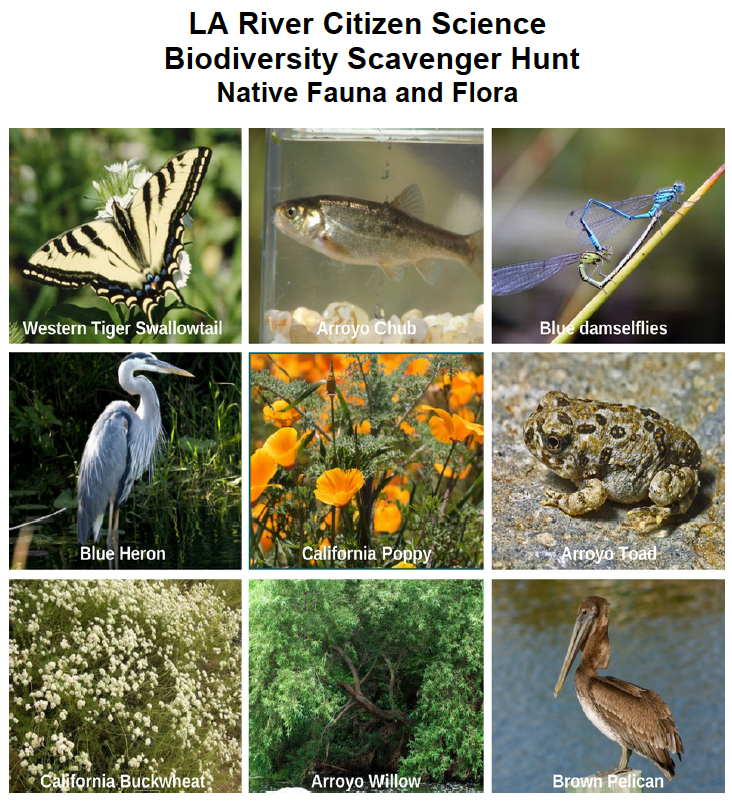#SummerScienceFriday | Explore the Wild of the LA River
- Jun 30, 2017
- 3 min read
This week for #SummerScienceFriday we explore the wild of the LA River providing information from our LA River watershed monitoring, as well as a citizen science biodiversity survey for you to use!
Known to be a hotspot for biodiversity, California’s Mediterranean climate has allowed the Los Angeles River to be a habitat for a mosaic of native vegetation and wildlife.With Los Angeles’ rapid urbanization and historic need for flood control, however, the river underwent more alteration and channelization, and the river’s biodiversity suffered as a result. Of the 51 miles of the Los Angeles River, only 13 miles (mainly in the upper parts of the watershed) retain a natural, soft-bottom riverbed. What you may have already guessed about the difference between the upper and lower watershed is confirmed by the annual Los Angeles River Water Monitoring Program (LARWMP) report: the upper watershed areas have better biodiversity than the lower parts, indicated by higher Biotic Condition Index score results. The scarcity of habitat along the channelized parts of the river increases the biological and ecological value of the smaller, more natural sections of stream, giving us a lot to see on our testing runs that we mentioned in a previous SummerScienceFriday post.
The River is home to over 250 species of birds, which has made it a great site for bird watching activities like those run by Los Angeles Audubon. The soft-bottom stretches of the river are home to various types of fish, reptiles, and amphibian populations, but few are native to the river. Native animals and plants are those that historically occurred and evolved in an area, so when we say native fish we mean fish that have historically lived in the river. The river had at least seven species of fish native to it; most famous of all is the steelhead trout. The Arroyo Chub and the Santa Ana Sucker fish are the two surviving fish species from the river’s native population, but they only occur in limited places and numbers- so keep an eye out on those! Non-native and invasive species are those that are introduced intentionally or accidentally to an area, with the difference being that invasive species disrupt natural ecosystems. Most of the fish found in the river today are non-native. The pamasgrass is invasive!
The wildlife does not stop in the water, as the river also supports life on its banks. The river attracts numerous insects to its habitat like damselflies, moths, and butterflies. While grizzlies no longer reside along the river, there are still some urbanized predators such as domesticated cats, coyotes, skunks, raccoons, opossums, and rats. If you are as lucky as we are (and happen to be in the more natural parts of the watershed, you might stumble upon bobcats, coyotes, and mule deer.
Here are pictures of some of the #rivercritters we encountered during our sampling trips.
Next time you are out in the wild, hopefully on the LA river, use the

citizen science biodiversity survey to help you identify some of the more common plants, animals, and insects that inhabit the river. The types of species you will see are broken down into two: native species and non-native/invasive species. If you notice more of the native species, that means you are probably in a more natural site! Do you want to check your result? View our River Report and see if your predictions are in line with our results. Don’t stop here! Learn more about California native plants using the PlantBookLA.










































Comments